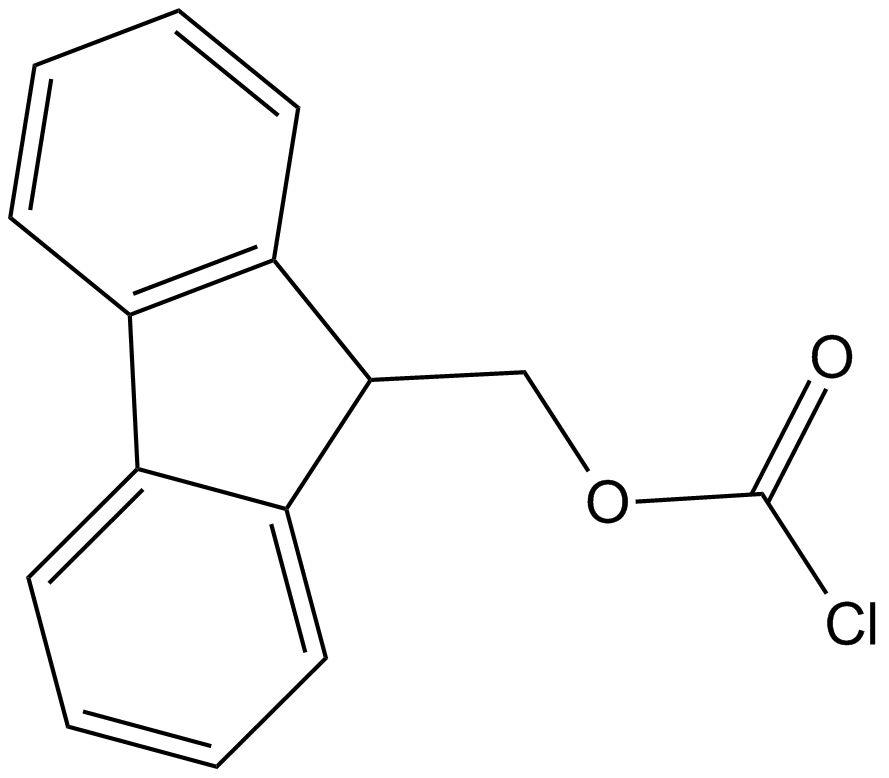Fmoc-Cl |
| Katalog-Nr.GA10139 |
Products are for research use only. Not for human use. We do not sell to patients.

Cas No.: 28920-43-6
Sample solution is provided at 25 µL, 10mM.
IC50: A series of Fmoc-based dipeptides were reported to show cytotoxicity in human cancer cell lines with the IC50 ranges from 0.4 to 1.0 M.
Fmoc-Cl, a chloroformate ester, is commonly applied to introduce Fmoc group during the formation of Fmoc carbamate. Fmoc-based dipeptides are widely explored as a potential anticancer drug. Fmoc protection also serves as a crucial method in solid phase peptide synthesis because it could be removed by piperidine without disturbing the linker between the peptide and the resin. In addition, due to the fluorescent property of Fmoc group, it could react with certain UV-undetectable compounds to form Fmoc derivatives which are feasible for HPLC analysis. [1]
In vitro: Among thirty studied Fmoc-based dipeptides, there were nine compounds intensively against tumor cell growth in human cancer cell lines including HepG2, Hep3B, MCF-7, MDA-MB-231, A549 and Ca9-22. The most active Fmoc-based dipeptide exhibited the highest sensitivity in Ca9-22 cell lines with an IC50 of 0.4 μM, which was 3-fold more potent than doxorubicin. Moreover, this compound had synergistic effect to enhance the antitumor activity of doxorubicin. [1]
In vivo: Peptide derived from Fmoc solid-phase synthesis was reported to have antiestrogenic and anticancer activities. Specifically, intraperitoneal administration of 0.5 μg such peptide had shown to prevent carcinogen-induced mammary cancer in rats and suppress the growth of ER+ human breast cancer xenografts in mice. [2]
Clinical trial: So far, no clinical trial has been conducted.
References:
[1] Yena CT, Wua CC, Leed JC, Chena SL, Morris-Natschkec SL, Hsiehb PW, Wua YC. Cytotoxic N-(fluorenyl-9-methoxycarbonyl) (Fmoc)-dipeptides: Structure–activity relationships and synergistic studies. Eur J Med Chem. 2010 Jun; 45(6): 2494-502.
[2] Joseph LC, Bennett JA, Kirschner KN, Shields GC, Hughes J, Lostritto N, Jacobsona H, Andersen TT. Antiestrogenic and anticancer activities of peptides derived from the active site of alpha-fetoprotein. J Pept Sci. 2009 Feb; 15: 319–25.
Average Rating: 5 (Based on Reviews and 30 reference(s) in Google Scholar.)
GLPBIO products are for RESEARCH USE ONLY. Please make sure your review or question is research based.
Required fields are marked with *




















